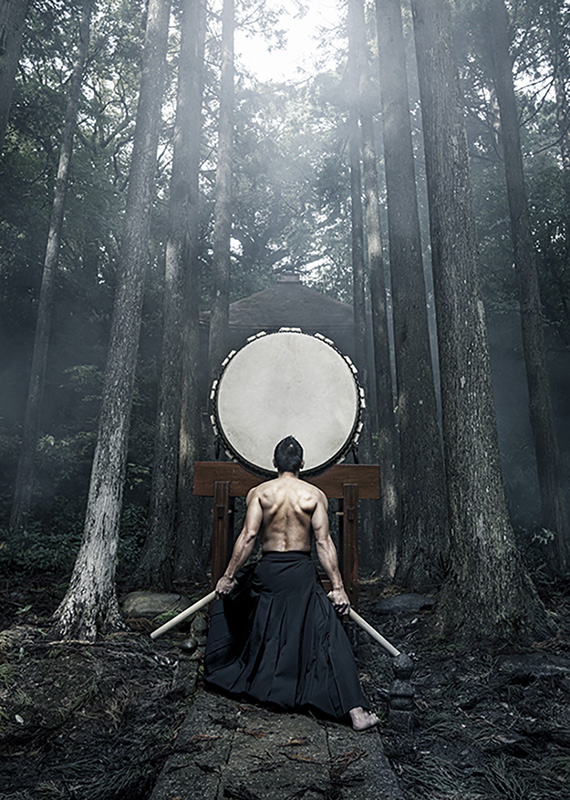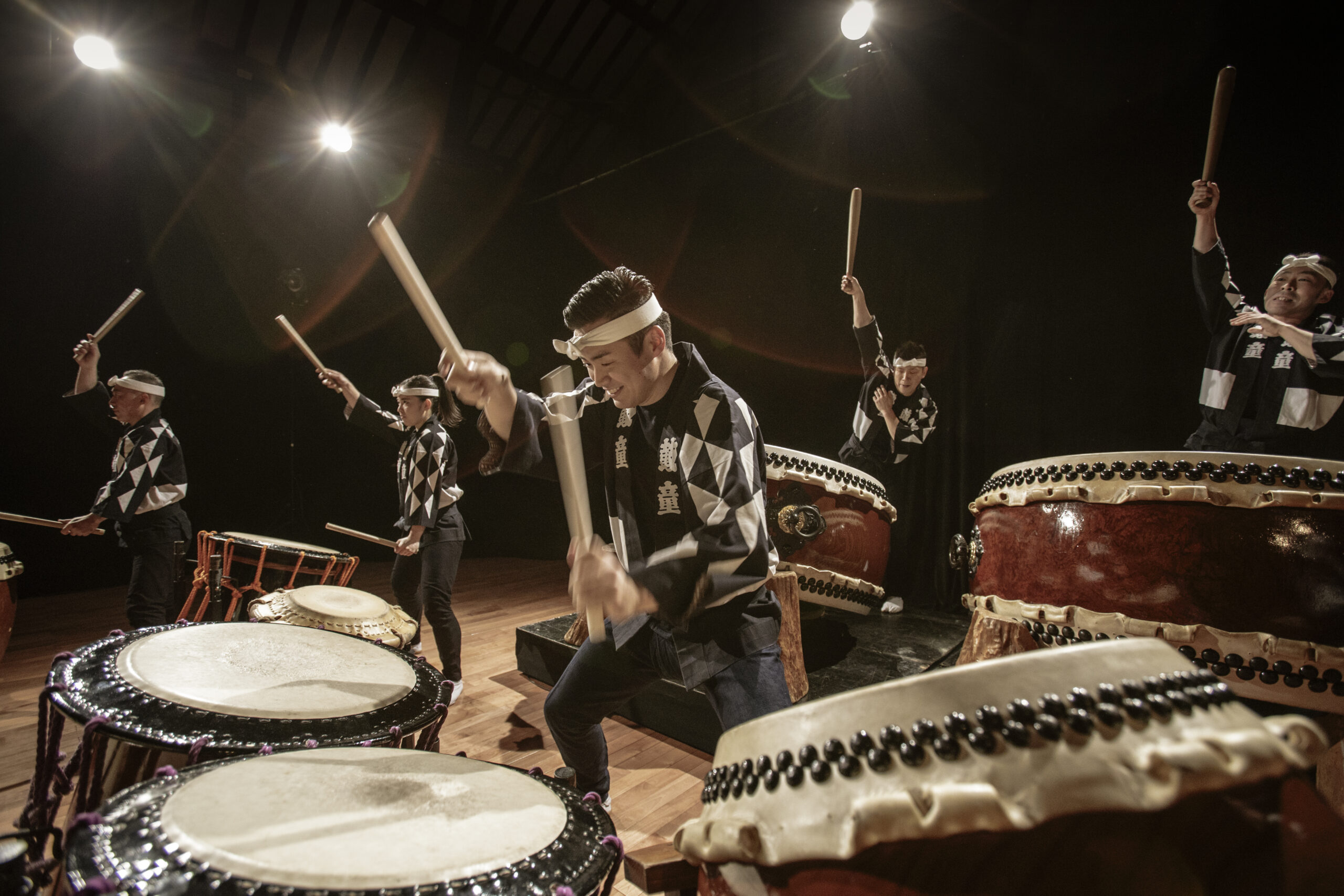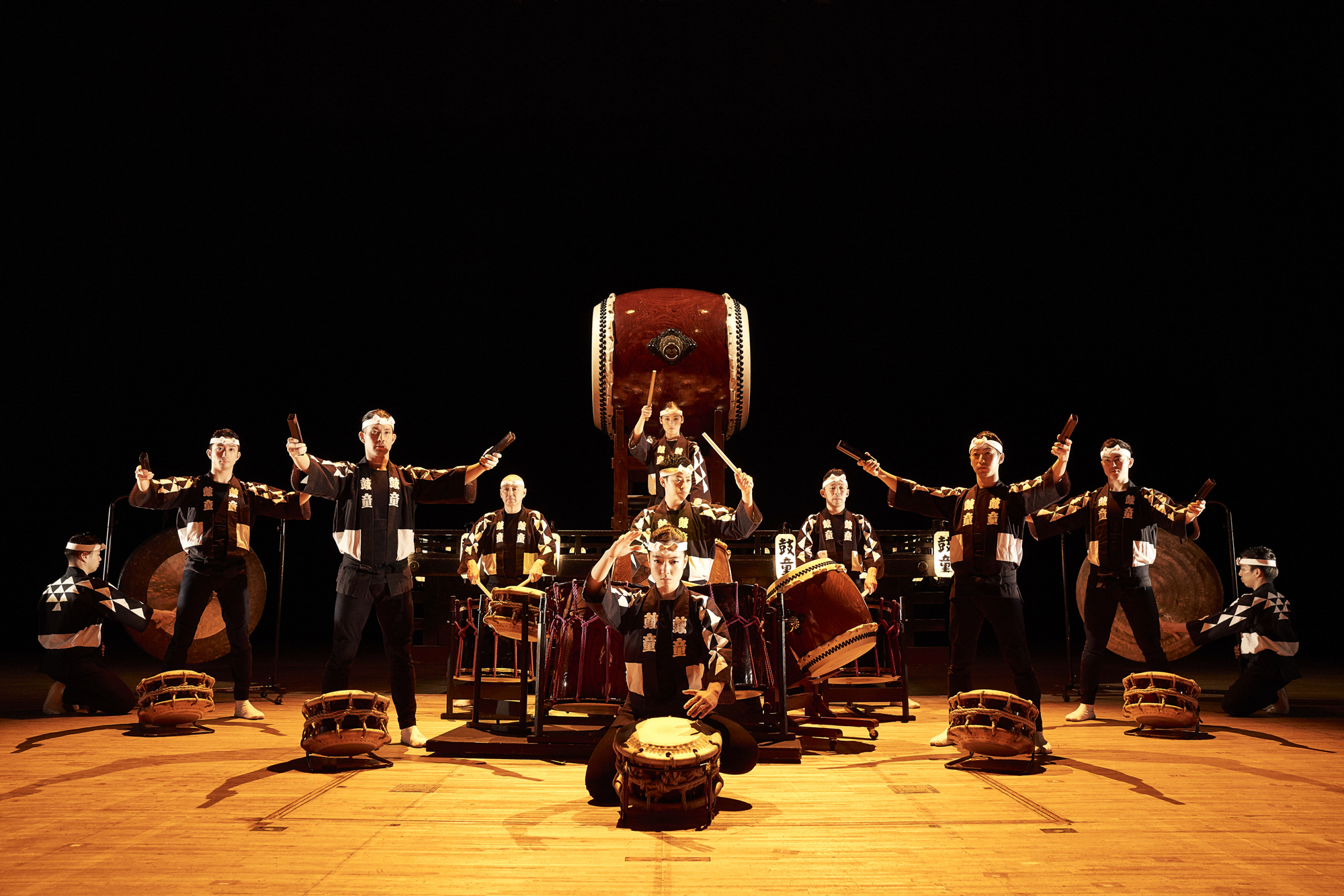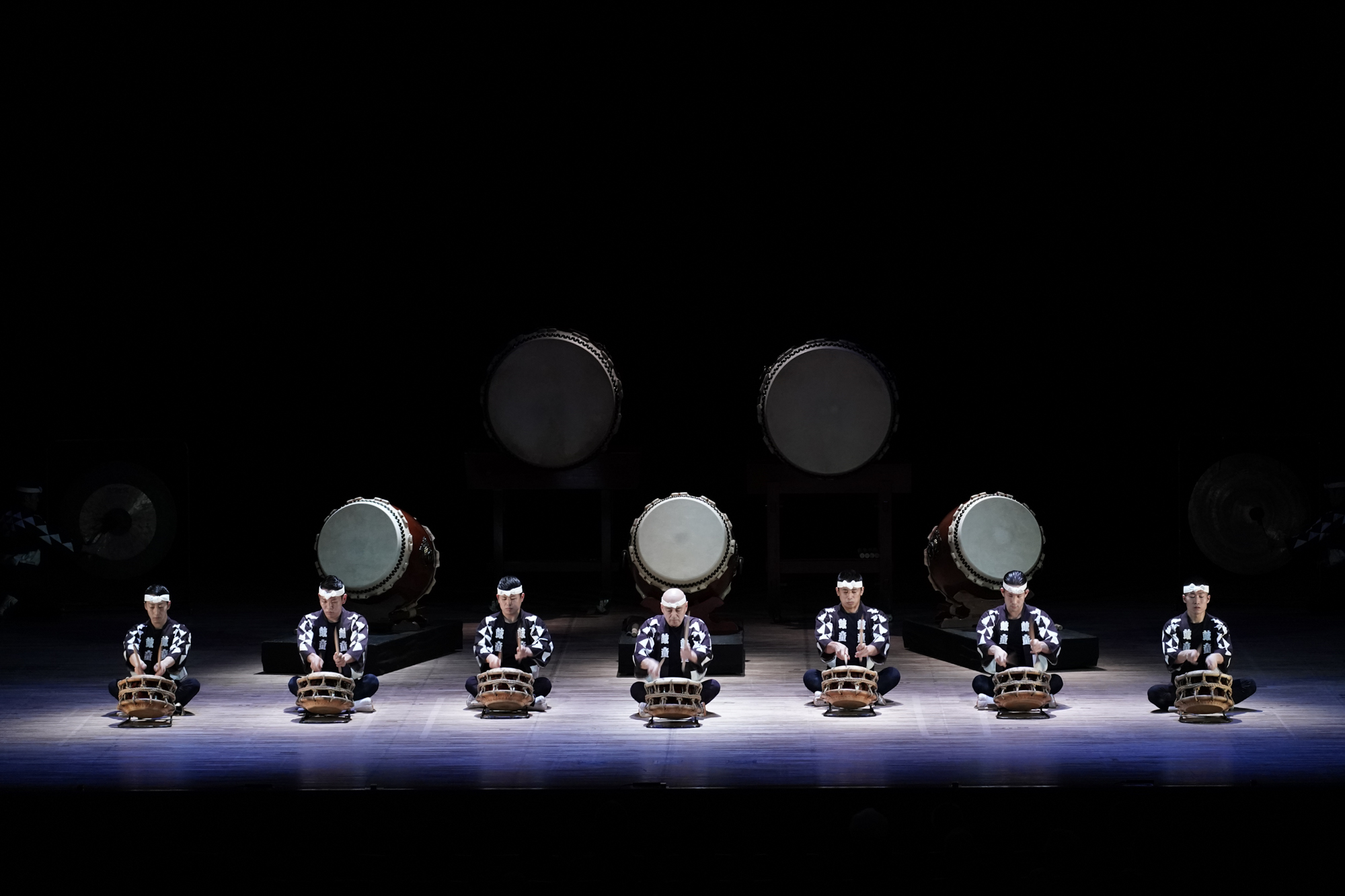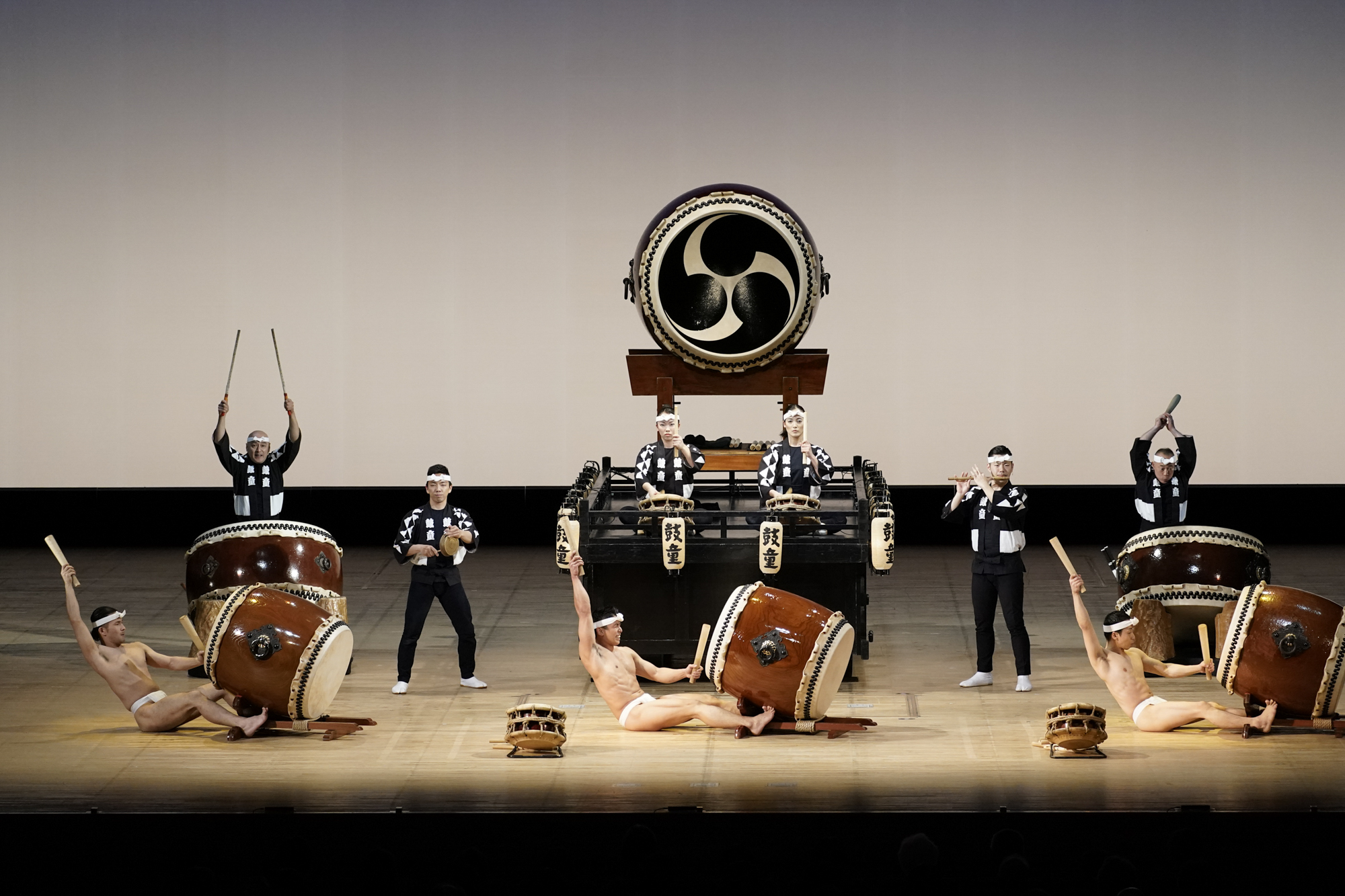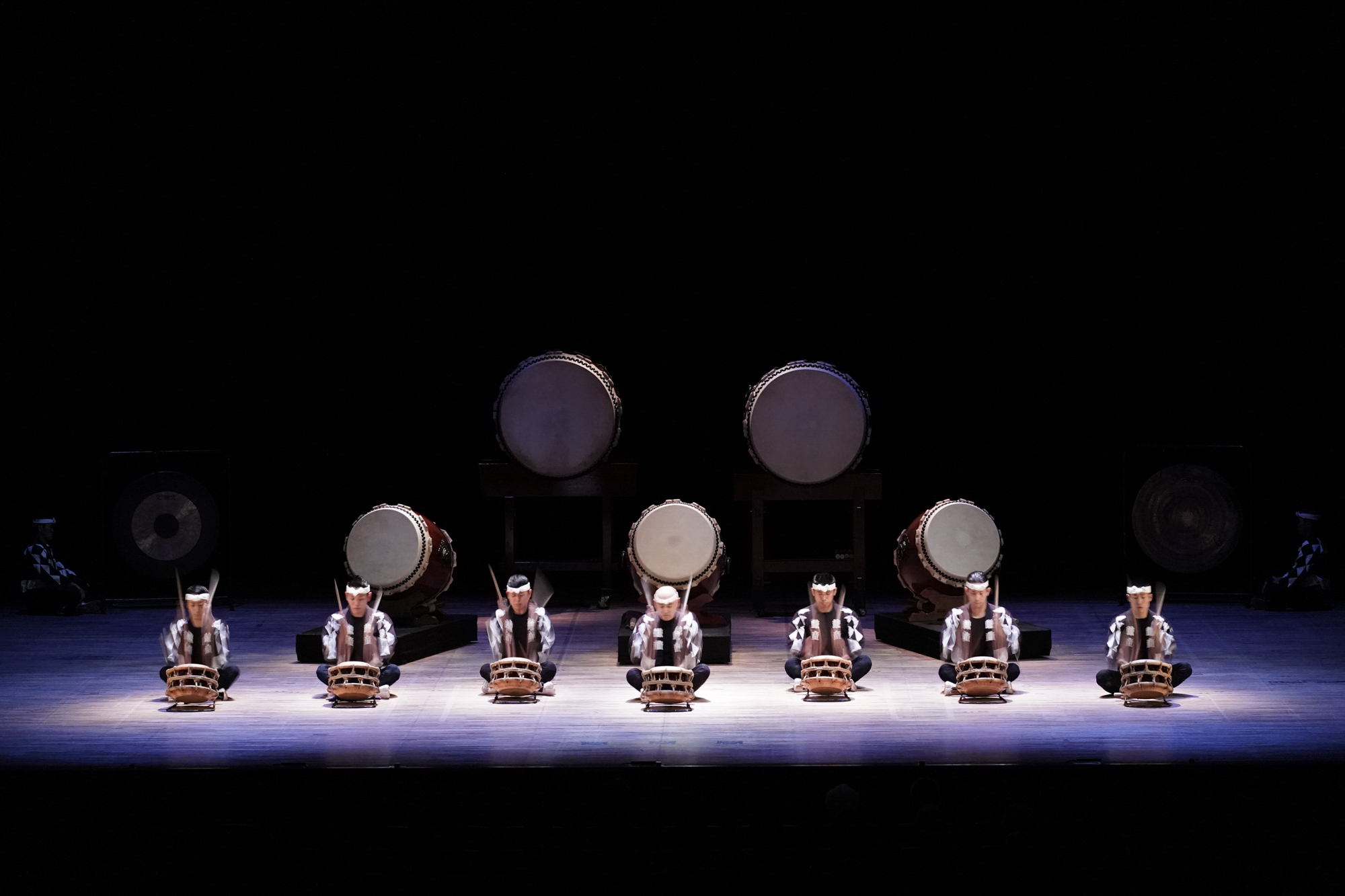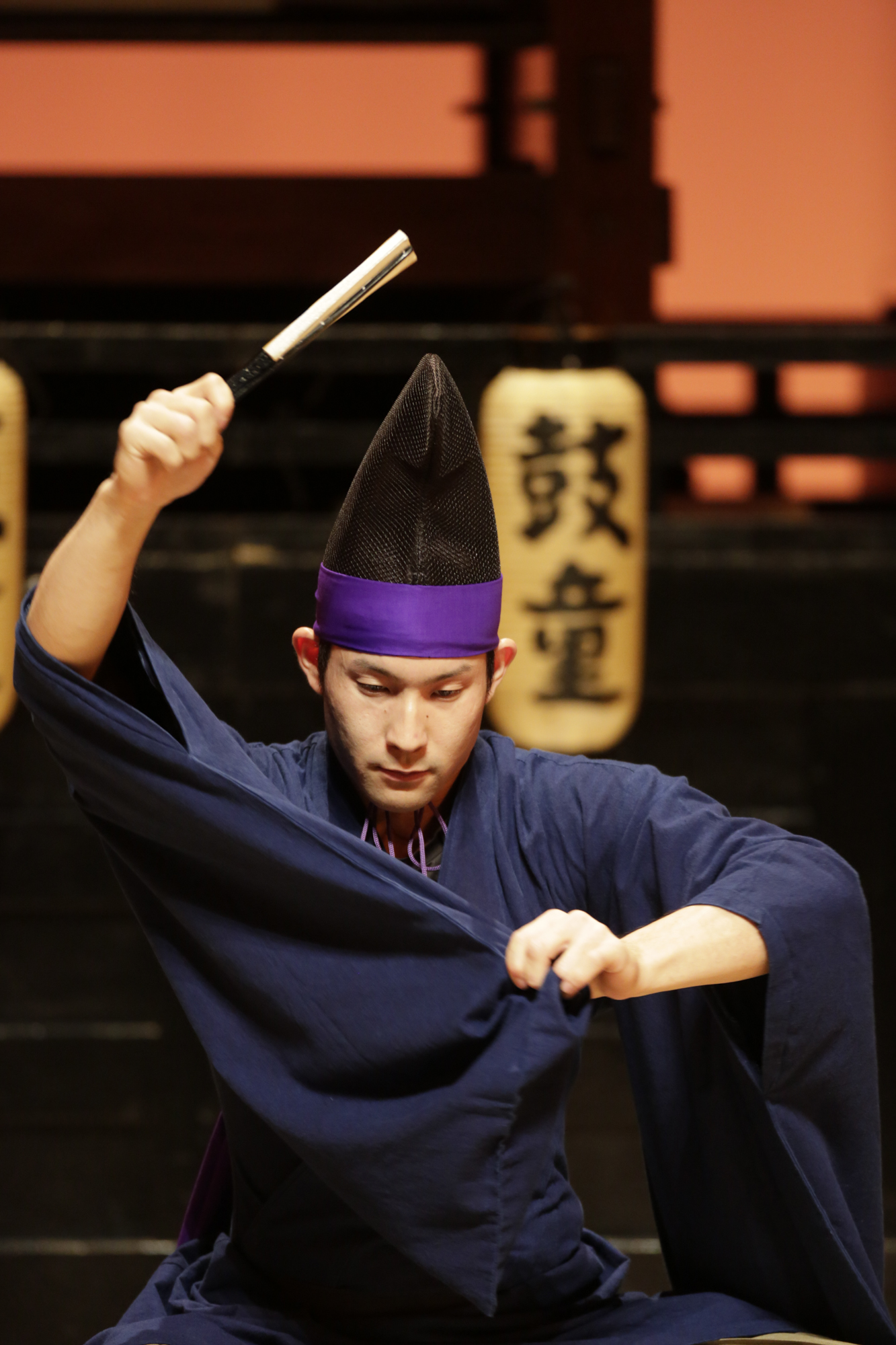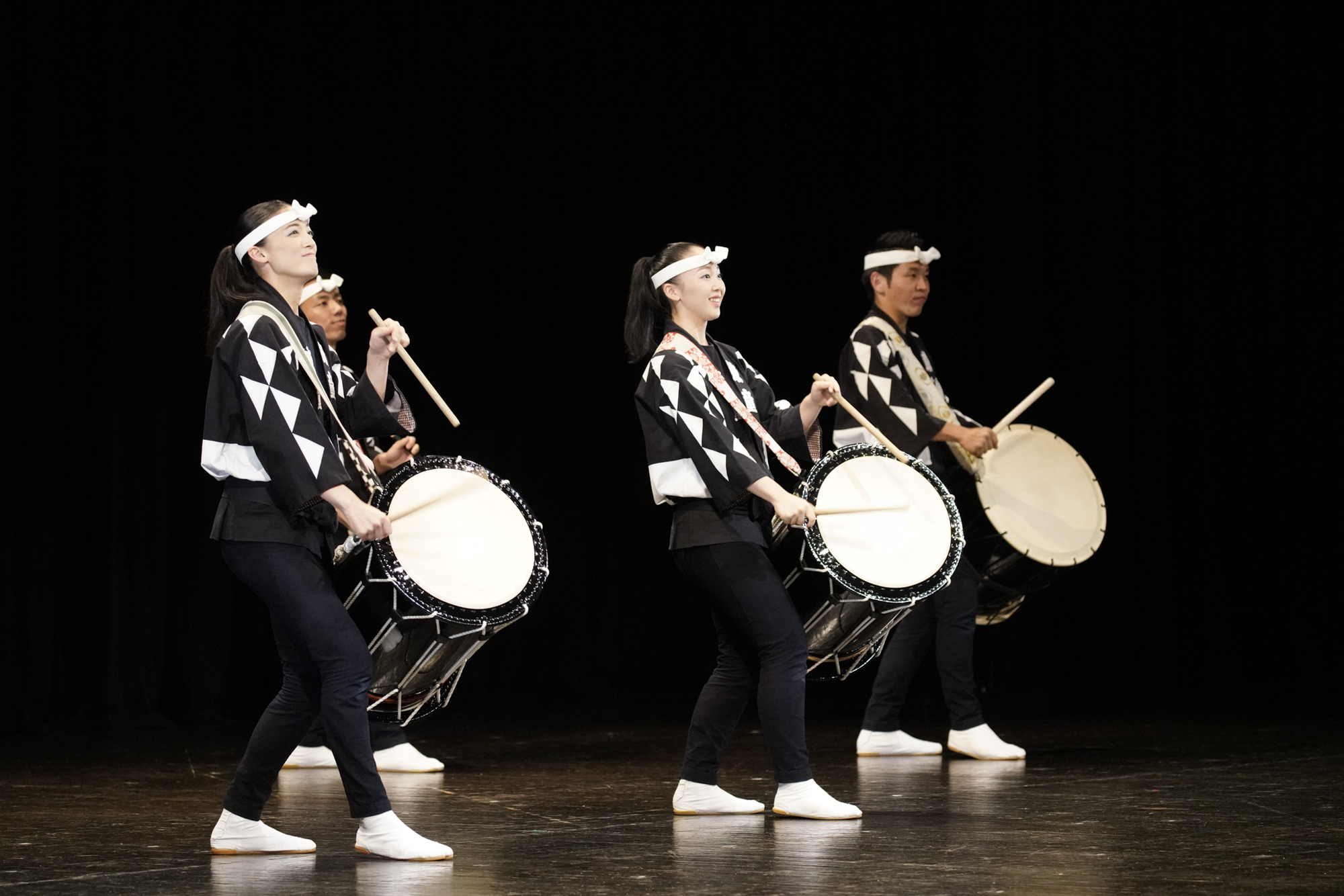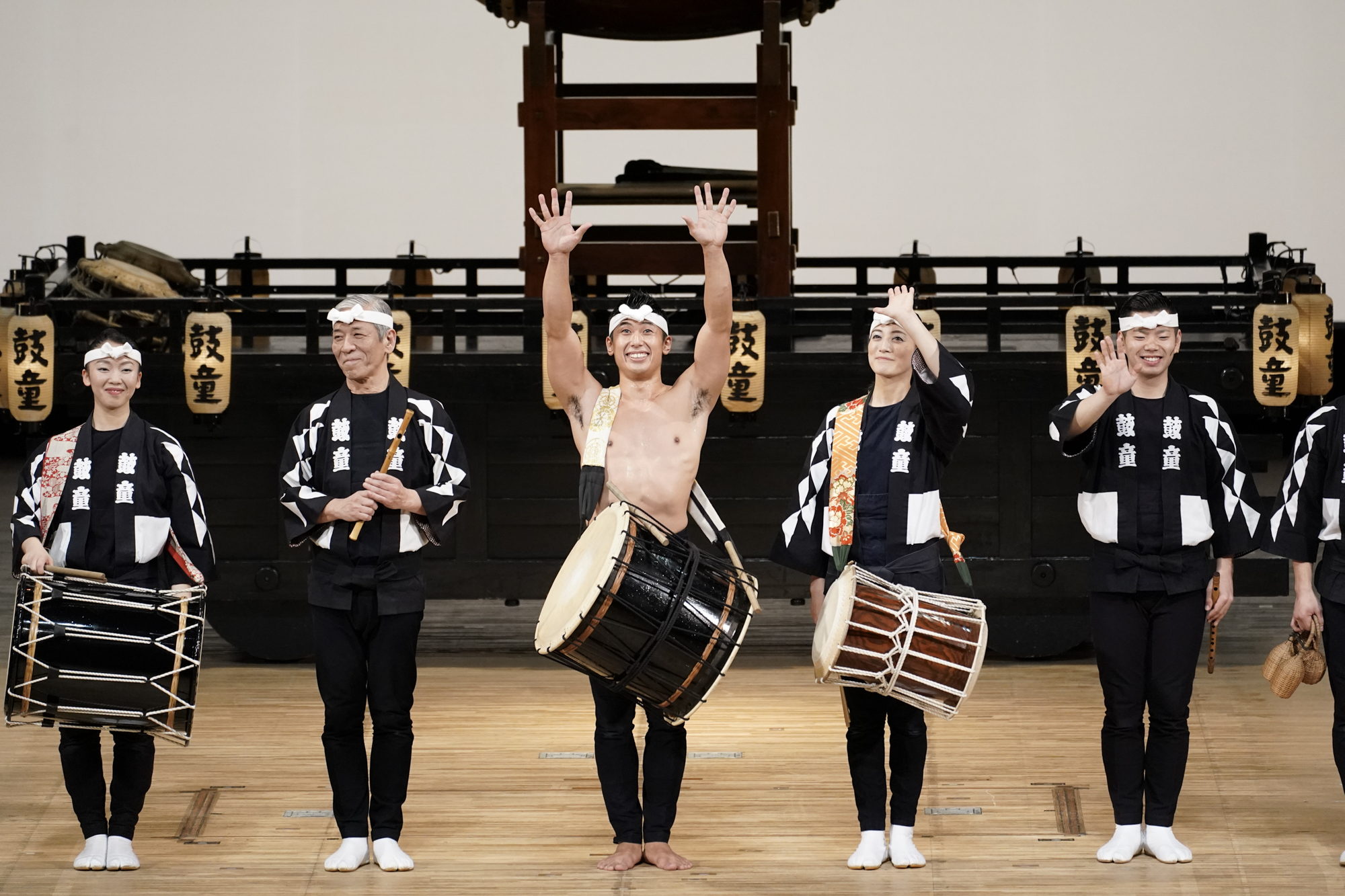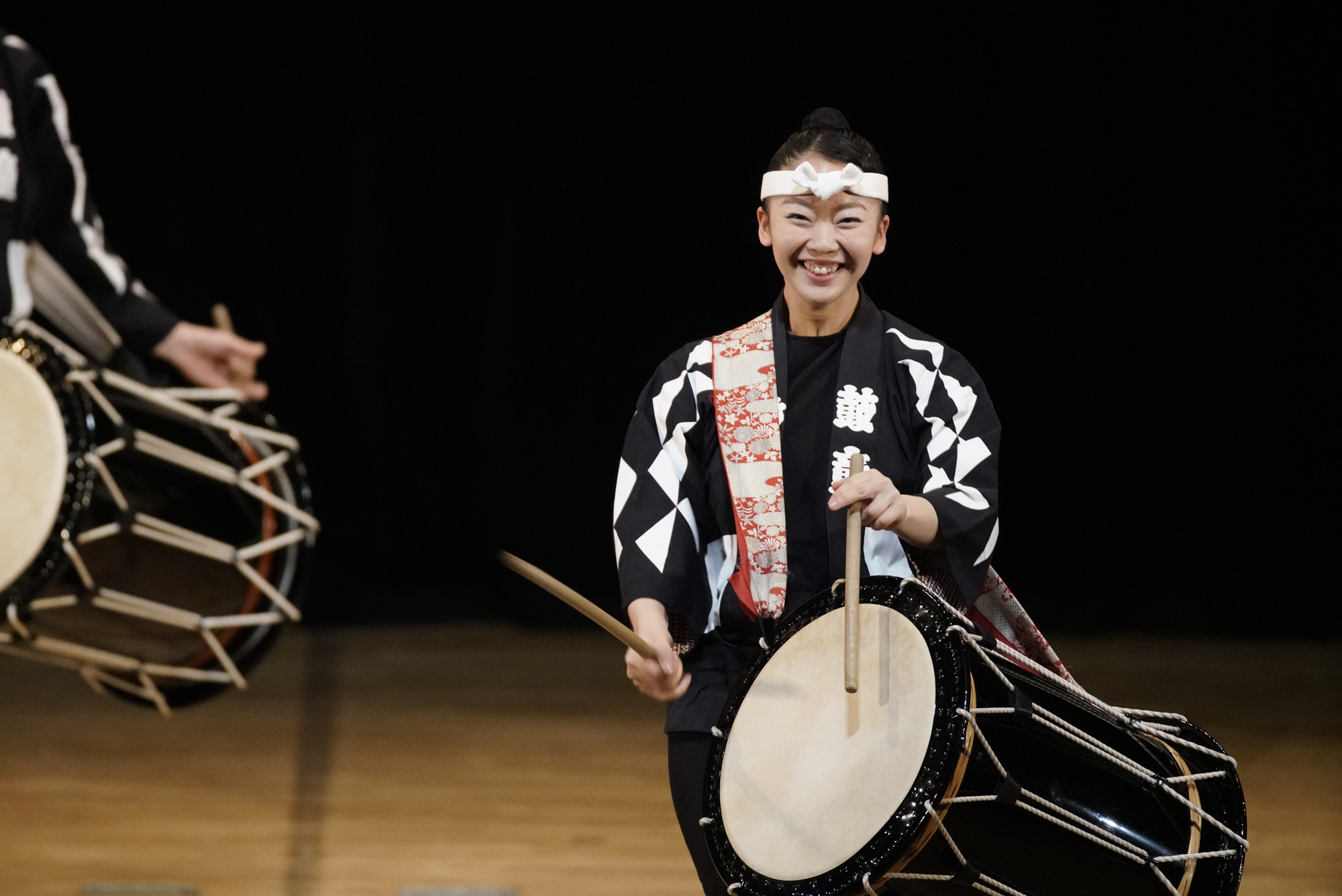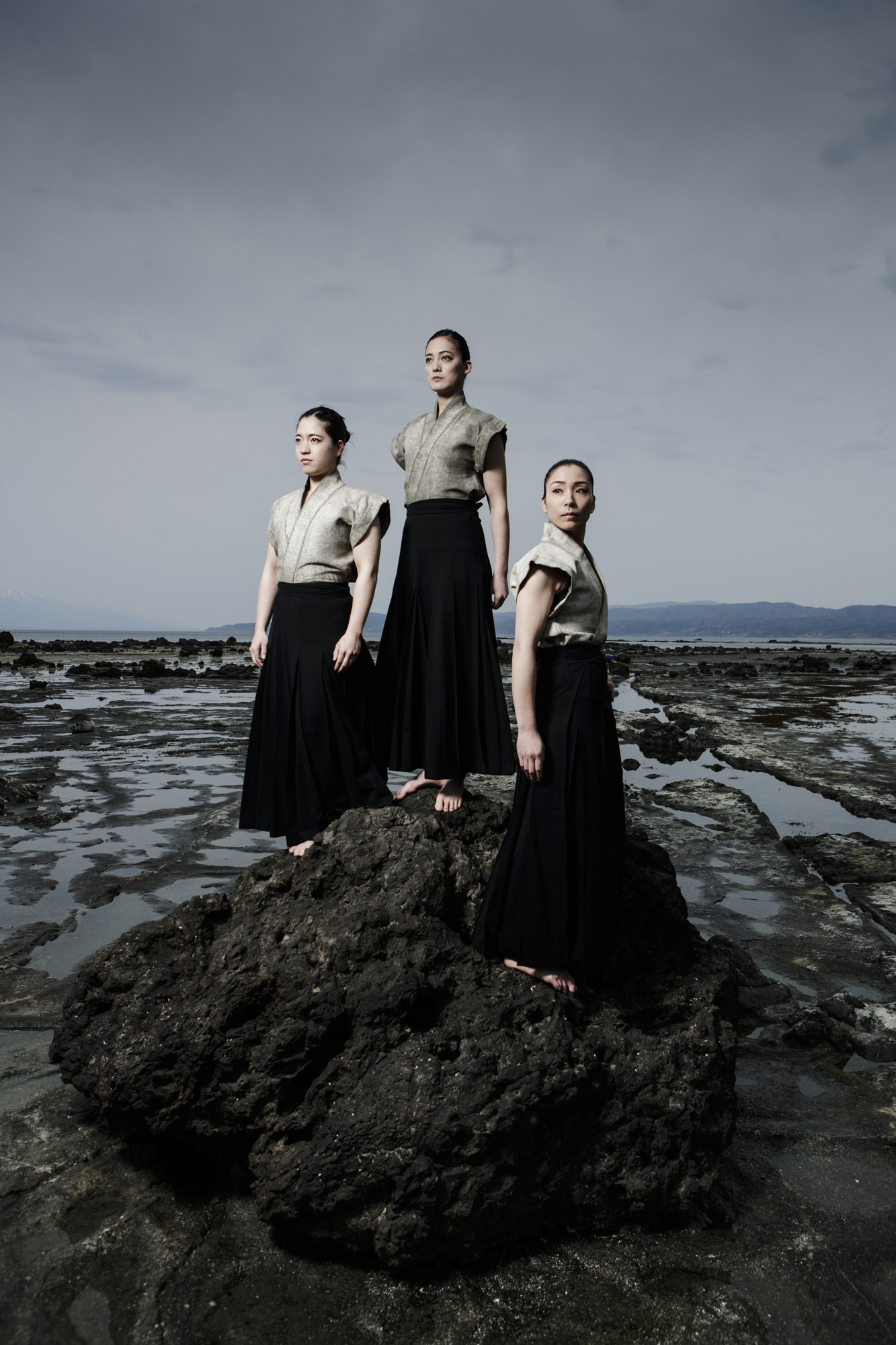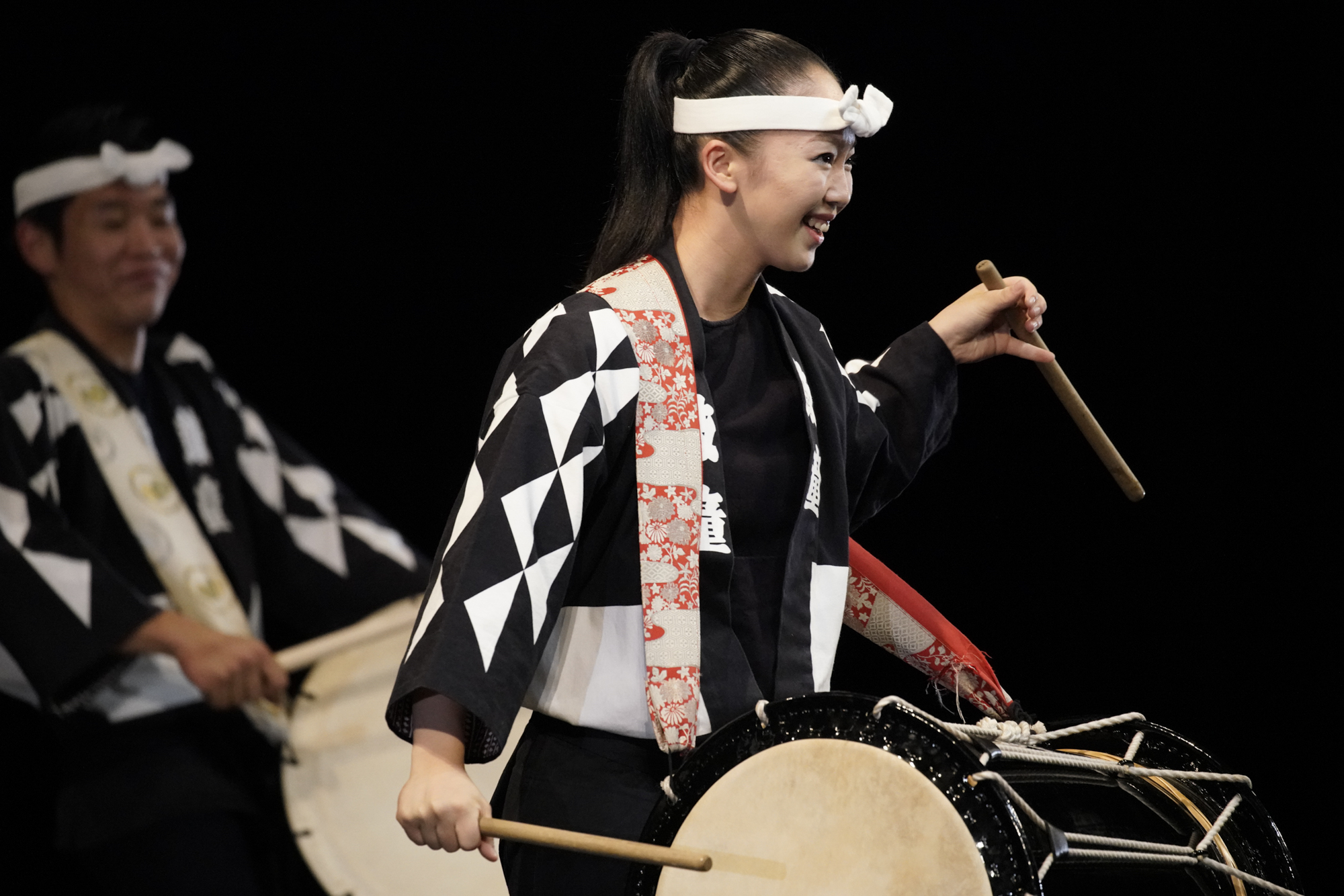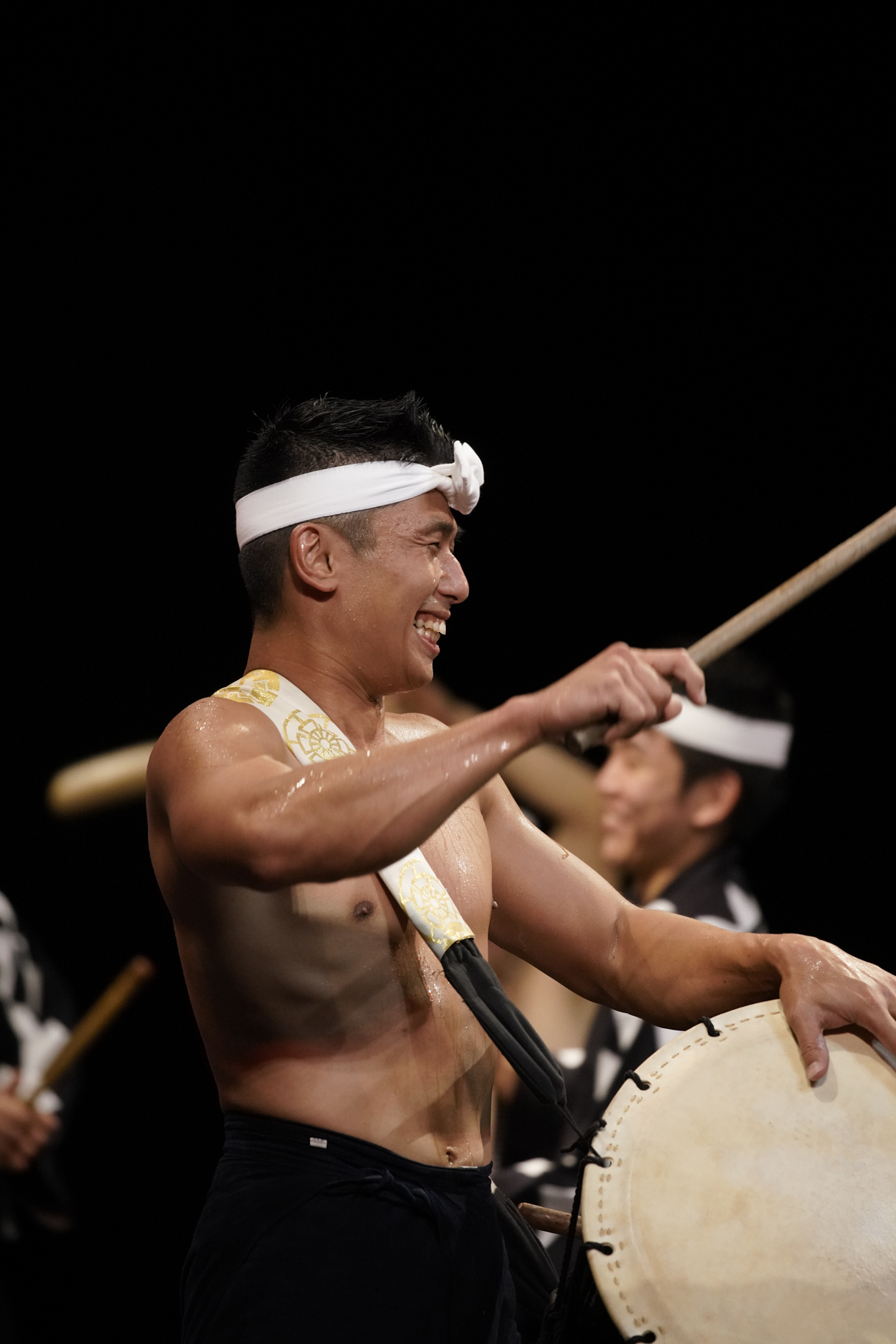KODO
SHOWS & ATTRACTIONS, WORLD MUSIC & JAZZ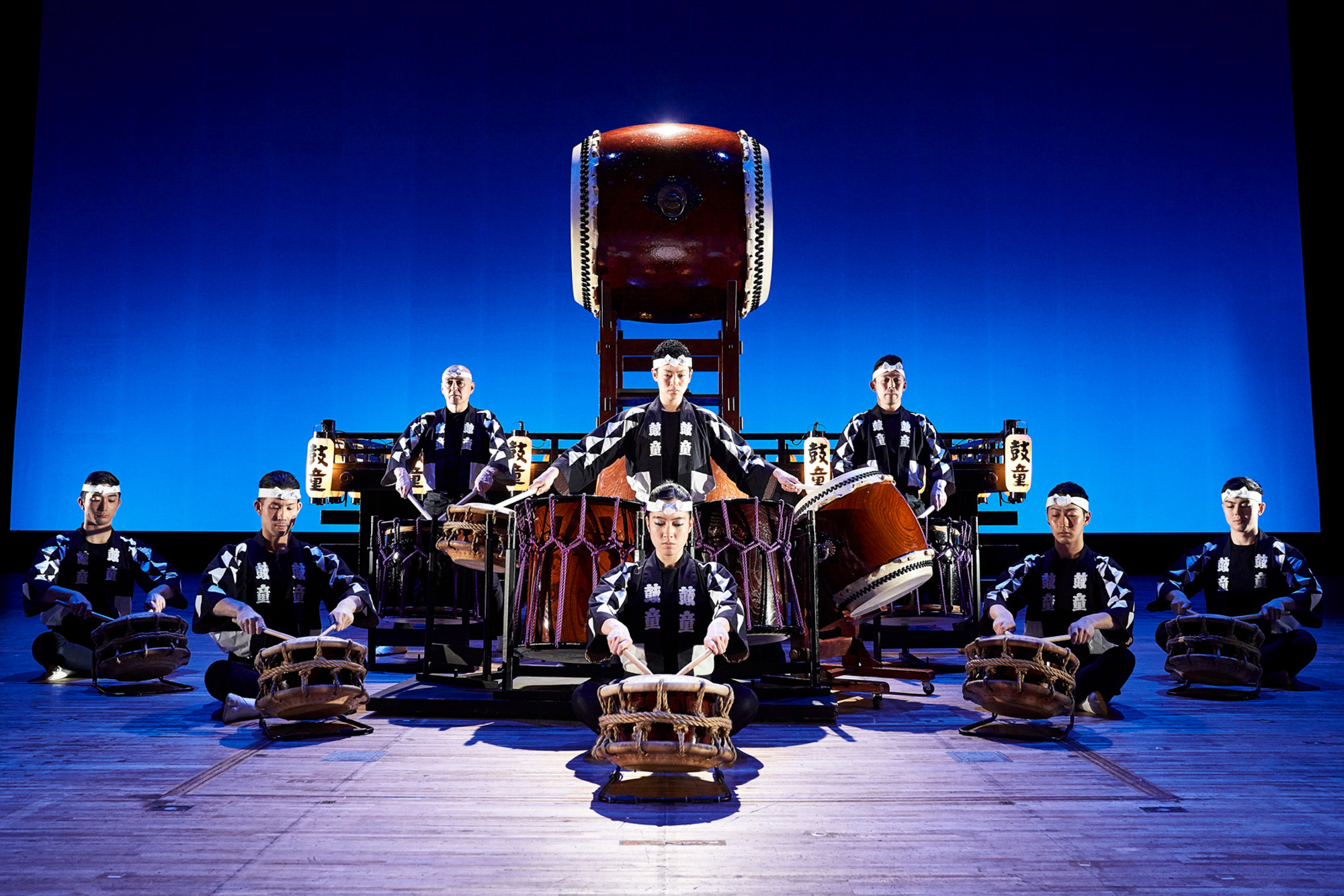
KODO
WORLD & JAZZ, ATTRACTIONS
ABOUT
Exploring the limitless possibilities of the traditional Japanese drum, the taiko, Kodo is forging new directions for a vibrant living art-form. In Japanese the word “Kodo” conveys two meanings: Firstly, “heartbeat,” the primal source of all rhythm. The sound of the great taiko is said to resemble a mother’s heartbeat as felt in the womb, and it is no myth that babies are often lulled asleep by its thunderous vibrations. Secondly, read in a different way, the word can mean “children of the drum,” a reflection of Kodo’s desire to play the drums simply, with the heart of a child. Since the group’s debut at the Berlin Festival in 1981, Kodo has given over 3700 performances on all five continents, spending about a third of the year overseas, a third touring in Japan and a third rehearsing and preparing new material on Sado Island.
Kodo History
1970s
In 1971, a handful of young men and women gathered on Sado Island to establish Sado no Kuni Ondekoza, a group that provided Japanese youth a way to learn traditional Japanese performing arts and craft. In order to support the group financially, the original Ondekoza members began to study and perform taiko, eventually taking the sound of the drum around the globe on world tours. Members lived communally in an abandoned elementary school and spent much of their time practicing the taiko and training to run marathons. After debuting internationally in 1975, Ondekoza emerged as a professional performance group that became highly acclaimed among European and North American audiences.
1980s
As time went by, many of the members began to feel that the philosophy and goals of Ondekoza leader Tagayasu Den no longer reflected those of the group. Eventually Mr. Den left Sado, taking the name Ondekoza with him. The members who remained on Sado reorganized and founded Kodo in 1981. Although performances became the primary focus of Kodo’s activities, the initial dream to establish a centre to study Japanese traditional performing arts and crafts has never been forgotten. The first leader of Kodo, Toshio Kawauchi, envisioned “Kodo Village,” a creative space where Kodo members could explore new possibilities and interact with artists from around the world. In 1984, the One Earth Tour became the ongoing banner for Kodo’s mission of bringing the sound of the taiko to the ears of the
world, and in 1988 the dream of Kodo Village became a reality.
1990s
As the number of concerts increased, both domestic and international performances received the highest acclaim. More members with a background in music joined the group, and events such as “Earth Celebration” enabled more exchange with other cultures and musical genres. As taiko culture spreads internationally, Kodo emerged as an authority in the field and solidified its identity as a musical performance group. In 1997, the Kodo Cultural Foundation was established to facilitate more educational and outreach programs.
Kodo in the New Millennium
Looking for new ways to explore the profound subtleties of taiko, Kodo begins to explore richer levels of stage expression. The Kodo Cultural Foundation supports both local and international activities through social-education and outreach projects designed to give back to local communities. In 2011, Kodo celebrated its milestone 30th anniversary with a special commemorative tour throughout Japan, North America and Europe. In 2012, Kodo invited Kabuki luminary Tamasaburo Bando to become its artistic director.
Tamasaburo Bando, Artistic Director
Tamasaburo Bando is a leading Kabuki actor, and the most popular and celebrated onnagata (actor specializing in female roles) currently on stage. He has demonstrated his profound aesthetic across numerous platforms, receiving the highest acclaim for his many artistic endeavors. His artistic direction of productions such as “Romeo & Juliet” and “Kaijin Besso” garnered numerous accolades, while as a movie director he shined in films such as “Gekashitsu,” “Yume no Onna,” and “Tenshu Monogatari,” which caused a splash in the arts world. In April 2012, Bando assumed the position of Kodo’s artistic director. In September 2012, he was recognized as an Important Intangible Cultural Property Holder (“Living National Treasure”) and in 2013 he was decorated with the highest honor of France’s Order of Arts and Letters, Commander.
Tamasaburo Bando & Kodo
In November 2003, the first Kodo performance directed by Tamasaburo Bando, “Kodo One Earth Tour Special,” was held. The production was created over the course of two years with Bando making five visits to Sado Island for rehearsals. In 2006, the first on-stage collaboration between Tamasaburo Bando and Kodo was realized in “Amaterasu,” a musical dance play based on a Japanese myth of the same name. It featured Bando as the sun goddess Amaterasu and Kodo as the gods of the story who express themselves through music and dance. This performance was a catalyst for Kodo to break new ground in taiko expression. In August 2007, encore performances were held at Kabukiza Theater in Tokyo. 2009 marked the debut performances of Kodo “Dadan,” a production that boldly portrays the essence of drumming. In February 2012, four days of sold-out “Dadan” performances took place at Théâtre du Châtelet in Paris, France. In May 2012, Bando’s first production as Kodo’s artistic director,“ Kodo One Earth Tour: Legend,” premiered. In 2013, a restyled “Amaterasu” production was performed in Tokyo, Fukuoka, and Kyoto. In November 2013, Bando’s second production, “Kodo One Earth Tour: Mystery,”
premiered.
The Building Blocks of Kodo Performances
There are three principal elements that make up a Kodo performance. The first is based upon traditional folk arts, learned from local practitioners throughout Japan. Our intention is not simply to replicate these historical arts; Instead, by reinterpreting and rearranging them for the stage, we strive to capture their universal spirit and energy as they filter through our bodies. Art forms rooted in the earth are developed through intimate relationships both between people and their art as well as between art and nature. Therein lie invaluable treasures rich with insights for people living in a bewildering age.
The second element of our performances is made up of compositions by Kodo’s friends and mentors. These include composers Maki Ishii and Shinichiro Ikebe, Kabuki musicians Roetsu Tosha and Kiyohiko Semba, and jazz pianist Yosuke Yamashita.
The third element consists of original works composed by Kodo members themselves who have leveraged their exposure to the rhythms and sounds of the many people and places they have visited as grist for their own creations. Building a Kodo performance program begins with blending these three elements together amidst the sights and sounds of Sado Island. It is then forged into shape on the anvil of dedicated practice and rehearsal.
One Earth Tour
The world is a kaleidoscope of people and cultures. In this age of exploding populations and lightening-fast communication, it is more important than ever that diverse cultures learn to understand and accept each other so that all may share our increasingly shrinking planet in harmony. Since ancient times the taiko has been a symbol of community, serving as a link among people, as well as a link between people and the heavens. Through the One Earth Tour, Kodo has given over 3,700 performances in 46 countries around the globe, making the group Japan’s most internationally acclaimed performing art ensemble. Kodo will continue to bring the sound of the Japanese drum around the globe, and with the taiko’s unique ability to transcend the barriers of language and custom, remind us all of our membership in that larger community — the world.
One Earth Tour: Legend
From the Artistic Director
I present to you “Kodo One Earth Tour 2012: Legend,” my first work as the new artistic director for Kodo. In this production, I wanted to create a performance that pays homage to the profound expressions of Kodo to date, adds splendor and levity, and harmonizes all elements into a single flow that undulates throughout the programme. I have also composed new pieces in the hopes that they will be passed on to future generations. In these days of tremendous challenge and difficulty, my aim is simply to create a performance that will transport the audience into an inspiring alternate reality, even if just for a brief spell. For this performance, in addition to Kodo’s standard hanten (traditional Japanese coat), I have also introduced some original costumes with additional fun and flair. I hope that both seasoned fans and first-time audience members will enjoy the entirety of this programme. I will continue to do all within my power to excel as the Kodo artistic director, and I hope that this programme will act as a catalyst for helping Kodo to reach a new audience.
-Tamasaburo Bando
One Earth Tour: Mystery
From the Artistic Director
Following “Legend,” which we started in 2012, we’re offering to our audiences the second work in the series, “Mystery.” In the earlier “Legend,” we linked in a continuous stream music by composers of different eras: Maki Ishii, Kodo’s Motofumi Yamaguchi, and some of our present new members. The work was created with the idea that the music would flow together as modern and traditional themes merged. With “Mystery” this time, we’re aiming at an enjoyable musical and visual experience of traditional performing arts from around Japan. When we say “regional performing arts,” of course we can’t actually bring those on stage. It’s Kodo’s “arrangement” of these that we’re hoping our audience will enjoy.
Everyone is drawn to mystery in their own way. For me, what has moved me on Sado Island is the great world of nature and the beauty of night darkness. Darkness is beautiful and also scary. You look at the road by the light of moon or the gleam of the stars. You look at blades of grass glistening in the night. The horizon of the sea glows dimly. You see what looks like lanterns far away. If they were near you, they’d
just be ordinary lanterns, but when you see tens or hundreds of them lined up in the distance, you feel the mystery that’s in humanity itself. In this production, there’s a “Great Serpent,” “Namahage Demons,” “Lion Dance,” and so forth, but these are just a means of leading our thoughts to mystery, and I hope the viewers will find enjoyment in discovering their own place of mystery. Thank you for your understanding and appreciation.
-Tamasaburo Bando
Amaterasu
In celebration of the ensemble’s 25th anniversary, Kodo presented “Amaterasu” for the first time in Tokyo in 2006. This production is a collaborative performance that both features and is directed by world-renowned Kabuki luminary Tamasaburo Bando. The Amaterasu production marked the first time Bando and Kodo shared the same stage after several years of collaborative work. Bando wished to incorporate a well-known Japanese myth into a collaborative piece with Kodo, and thus Amaterasu was created.
Since its inaugural performance, this musical dance-play has received high critical acclaim, and in 2007 Bando and Kodo were invited to give special performances at the renowned Kabuki-za Theater in
Tokyo. In 2013, Amaterasu was reinvented with a brand new cast, returning to the stage for the first time in six years. This restyled production features incomparable dance by Bando who plays the lead as the sun goddess Amaterasu. Special guest Harei Aine (former Takarazuka Revue performer) portrays Ameno-uzume, while Kodo performers play taiko, koto harps and flutes as well as sing, depicting the gods who appear in this famous Japanese myth. In this most recent season, all sixty-seven performances in three major Japanese cities (Tokyo, Kyoto and Fukuoka) welcomed sold-out audiences.
Dadan
“Dadan,” meaning “drumming men,” was designed by Tamasaburo Bando as a simultaneously raw and refined performance that features solely young male Kodo performers in a bold exploration of percussion instruments. When compared to a standard Kodo performance, Dadan is unique with its absence of singing, dancing, flutes and female performers. This production uses taiko drums of all shapes and sizes accompanied by other instruments such as gongs and the Grangtang (a bamboo instrument of Jegog from Bali, Indonesia). For select performances, Dadan also features a video screen that links live and pre-recorded footage to the performance, adding new dimensions and an enhanced experience for the audience. Today, this piece continues to evolve creatively on stage, gaining dynamism and power with each performance. It features the performers playing the O-daiko (big drum), each facing the giant drum head on in turn, which allows the audience to become completely immersed in sound as they watch each disciplined player drumming will all his might. One could say that this piece simultaneously tests the limits of a player’s physique, technique, heart and mind.
Dadan saw its world premiere in Tokyo in September 2009, and the success of this initial run led to its foreign debut at Théâtre du Châtelet in Paris, France with four sold-out performances in 2012. Following its success abroad, Dadan toured Japan in 2012 and was showcased twice at the annual international festival “Earth Celebration” on Sado Island.
Kodo’s Home of Sado Island
Since 1971, Sado Island has been our home and the platform from which we reach out to the world. With nature’s warm embrace evident in each of her four seasons, Sado is an extraordinary place where traditional ways of life and the island’s indigenous performing arts still thrive today. This island is the fountain of our inspiration and the guilding force behind our creative lifestyle. Our goal is to find a harmonious balance between people and the natural world. Each time we venture off the island we encounter new people, customs, and traditional performing arts that are ingrained in the lifestyles of each locale. Both similarities and differences prompt us to pause and reflect upon the importance of the varied and rich cultures that color our world. These life lessons permeate our very skin and become an invisible source of our expression. It is through this process of “Living, Learning, and Creating” that we cultivate a unique aesthetic and sensitivity, reaching out toward a new world culture rooted in the rich possibilities of a peaceful co-existence between humanity and nature.
Kodo Village
Despite years of international touring and the constant infusion of global influences, Kodo is fiercely dedicated to its home of Sado Island. In 1988, we built our own Village not far from our original schoolhouse base by the sea, which over the years has grown to include living, practice, recording and office spaces, farm land, and carefully tended forests. The lives of 60 Kodo members from throughout Japan are centered in this village. The group also maintains the school buildings and surrounding grounds in another part of Sado Island, which house the Kodo Apprentice Centre.
International Music Festival Earth Celebration
Every year since 1988, the rich natural splendor of Sado has set the stage for Earth Celebration (EC), Kodo’s international arts festival that seeks an alternative global culture through musical and cultural collaborations with artists from around the world. Produced by Kodo in cooperation with the people of Sado Island, EC is the nation’s longest running music festival, described by the New York Times as “Japan’s leading music event.” In 2009, in recognition of the organization’s “notable contribution to the promotion of Japanese traditional culture and to the revitalization of the local community,” the Earth Celebration Committee was awarded the Tiffany Foundation Award for the Preservation of Japanese Traditional Arts and Culture in Contemporary Society.
Education and Community Outreach
Workshops
Kodo workshops are not about teaching new pieces of music or polishing technique. The goal is rather to provide a situation where each participant can experience the joy of expressing their individuality through music. In addition to the multi-day Kodo Juku held at the Kodo Apprentice Centre, School Workshop Performances are given throughout Japan. Recently, with the opening of the Sado Island Taiko Centre, Kodo has been able to take its local community outreach work to the next level, sharing the tradition of taiko through hands-on workshops and various cultural-exchange events.
School Workshop Performances
Since 1999, in addition to their regular appearances, Kodo has held a number of School Workshop Performances taking place mainly at junior high schools. Kodo hopes this experience serves to introduce young Japanese people to their own traditional culture and perhaps even contribute in some small way to their own self-discovery.
Kodo Juku
With the backdrop of Sado Island’s natural splendor, the Kodo Juku offer participants the rare opportunity for an intimate multi-day live-in workshop experience with Kodo members. Participants are
invited to gather on Sado Island for a short retreat where the goals are simply to live, learn, and create.
KASA/MIX
Organized by Kodo Arts Sphere America (KASA) and held biannually, the KASA/MIX tour brings participants to Sado Island to live at Kodo’s Apprentice Centre and study taiko, dance, and song together with Kodo members. Conducted in English mainly for taiko enthusiasts from abroad, the KASA/MIX tour gives participants a taste of Japan and the Kodo way of life.
Lecture/Demonstrations
Kodo offers special educational shows where the music and instruments are explained in between songs. There is even a section where audience members can have a go at playing the drums on stage. Lecture/Demonstrations are offered as options in tandem with One Earth Tour bookings.
Kodo Cultural Foundation
Thanks to the support of many friends, the Kodo Cultural Foundation was established in 1997 in order to increase Kodo’s capacity for outreach projects on our home of Sado Island. Its primary mission is to carry out non-profit activities focused on social education and the notion of giving back to the local community. The Kodo Cultural Foundation is committed to the cultural and environmental preservation of Sado Island and oversees many ambitious projects. From the conservation of local habitats to the revitalization of rare craft traditions and Noh theaters throughout Sado Island, the highly collaborative Kodo Cultural Foundation supports many vital initiatives. If Kodo’s performances were likened to a garden, then the foundation would be the roots of the plants growing there. Its activities include holding workshops, planning the annual Earth Celebration, creating a research library, managing the Kodo Apprentice Centre and the Sado Island Taiko Centre, and carrying out research in the performing arts.
Friends of Kodo
Friends of Kodo is a support group maintained by the Kodo Cultural Foundation established to bring Kodo closer to its audience and fellow taiko enthusiasts. Membership is available to all. As well as receiving the latest information by postal mail, members also get special advance ticket reservations for selected concerts in Japan, the chance to buy original goods available only to members, and selected discounts on a range of Kodo merchandise. They are also given priority placement in certain Kodo workshops. Through this group, we enjoy getting to know the people who support our activities by name.
Earth Furniture
Kodo cares deeply about the natural environment of its home, including Sado’s lush forests. To create a model of how a local resource could be sustainably managed, Kodo designs and manufactures interior furnishings from native, renewable timber. Cured by the sea, built by hand, and designed by Kodo Cultural Foundation chairman and renowned designer, Makoto Shimazaki, it is sold under the name “Earth
Furniture.”
Kodo Apprentice Centre
In a converted schoolhouse in Kakinoura on Sado Island, the young people who will continue and expand on Kodo’s traditions are trained, not just in musical technique but also in all matters of body and spirit. Beginning in April, apprentices live communally and train for two years. From this group, probationary members are selected in January of the second year. These chosen few spend one year as junior members, and if they are successful, they then become full Kodo members. Kodo seeks people of all backgrounds who are interested in becoming apprentices, and perhaps the next generation of Kodo players and staff. Apprentices live communally in the Kodo Apprentice Centre as they learn taiko, dance, song, and other traditional arts in the rich natural and cultural surroundings of Sado.
Sado Island Taiko Centre
In 2007, the Sado Island Taiko Centre, located right next to the Kodo Village, was completed. Designed to provide learning materials and hands-on experience in the ancient art of taiko, this facility was made possible by the Sado municipal government working in cooperation with the Japanese Ministry of Land, Infrastructure, Transport and Tourism. It is operated by the Kodo Cultural Foundation. In addition to providing a venue for practicing taiko and other traditional performing arts, the facility also includes classrooms for cooking classes, an exhibition space, and meeting rooms. The two-story wooden building was made from all local materials from Sado Island, and uses “Earth Furniture” made from Sado timber. Elementary and junior high school student groups from both on and off the island, as well as the general public, are invited for workshops and gatherings at the centre. It is hoped that this facility will grow to be a place to experience the rich performing arts culture of Sado Island, as well as a place to pass on a “culture of creation” to future generations. Kodo also uses this facility as a venue for exchange with people from Sado and all over the world. We hope that we can share some of the knowledge and experience we have gained through our activities on the island and through our travels over the past three decades.
Kodo Arts Sphere America
Established in 2002, KASA is a United States nonprofit corporation designed to encourage, enable and support programs and opportunities for North Americans to study and understand the traditional and contemporary Japanese music of the taiko and its related performing arts. Its primary goals are to facilitate communication among community taiko groups both in Japan and North America, to perpetuate the taiko tradition and all of its related art forms, and to shed light on the inherent power of this ancient instrument to positively shape the world in which we live.
—-
Visit www.kodo.or.jp for further information
Direct contact: Jun Akimoto, Company Manager
Kodo, 148-1 Ogi Kanetashinden, Sado Island, Niigata 952-0611 JAPAN
Tel. +81-259-86-3630 / Fax. +81-259-86-3631
Email: [email protected]
RECENT PRAISE
THE SUNDAY TELEGRAPH
“Excitingly varied, marvelously theatrical, fascinating from start to finish, with moments of vivid physical excitement, this programme by a small group of dancers and drummers, remaking performance arts into a modern theatrical experience, was a model of what can be done with folk art.”
LE QUOTIDIEN
“The spectator is crushed by their power and then suddenly, silence. Complete silence as if life had stopped in an instant, no applause, not even a breath. I have never seen a show where the audience was so close to suffocating. Don’t miss this, the sound of their drums will be engraved forever on your memory.”
THE NEW YORK TIMES
“Traditional rituals recast as theater, and contemporary thoughts about ancient instruments both figure in Kodo’s performance, which includes ancient and modern compositions. Yet with tense, angular postures, with stylized, frozen gestures and, in one playful piece, with animal-like scampering and slithering, Kodo reminds its audience that, above all, its music is a matter of flesh and blood, wood and stretched skin. Kodo can raise the roof, but the group can also show extraordinary finesse.”
THE GUARDIAN
TIM ASHLEY
“Bychkov calls the ‘Leningrad’ Symphony ‘a cry from the heart against death’… His interpretation goes wider than anger and despair, though both emotions coursed through every bar. There was, throughout, a sense of historical and cultural continuity under threat. It’s the best thing I’ve heard Bychkov do, and one of the greatest performances of the work in recent years.”
THE VILLAGE VOICE
“Having spent some time with them, jazz drummer and composer Max Roach thinks of the Japanese drummers of Kodo as regular guys. On stage it’s another story – clad in sweatbands and loincloths, they are like percussionist kamikazes. You expect them to drum till they drop. “The technique they use to play percussion instruments is totally different from anything I’ve ever seen” he says… They deal with that ‘visual sound’ more than anyone I’ve ever known.”
NEW YORK TIMES
“…this was a typical Kodo evening: a celebration of music, of physicality, of life. But it was delivered with a sort of manic intensity that spoke to the import of the moment more eloquently than any words could have. “
THE CHICAGO TRIBUNE
“Superlatives don’t really exist to convey the primal power and bravura beauty of Kodo.”
THE GUARDIAN
“Balancing a deadly aggression with utter tranquility, their sound stretches from the lightest of rainfall to cataclysmic thunderclaps, from pleasant laughter to discordant fear and from silence to – just once here – a wall of sound, as high, frightening and impregnable as a mountain. Musicians, theatre directors and all interested in the sheer power of sound to feed emotions should take note.”
CHICAGO TRIBUNE
“Throughout, the devil of it is the combination of the discipline of a surgeon’s scalpel with the primitive, muscular endurance of a cavalry charge.The speed and dexterity are as impressive as the physical tenacity is breathtaking.”
BOSTON GLOBE
“Indeed, if there is such a thing as perfection in music, Kodo comes as near to it as any group in the world.”
CONTACT
Dean Shultz
GENERAL MANAGEMENT
T: +1 212 994 3533
EMAIL
SARAH GREENLEE
TOUR & PRODUCTION ASSOCIATE
+1 212 994 3527
EMAIL


